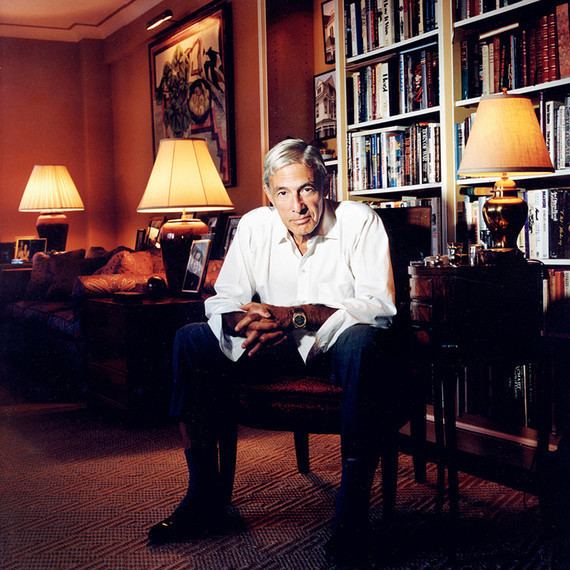Cause of death Cancer Parents Bobby Weitz, Hedy Weitz Role Clothing designer | Name John Weitz Religion Jewish | |
 | ||
Full Name Hans Werner Weitz Born May 23, 1923 ( 1923-05-23 ) Berlin, Germany Occupation Menswear designerNovelist and Historian Children Chris Weitz, Paul Weitz, Robert Weitz, Karen Weitz Curtis Books Hitler's Banker, Hitler's diplomat, The value of nothing Similar People | ||
JOHN WEITZ VINTAGE BLUE NAVY TRENCH COAT S~LG
Hans Werner "John" Weitz (May 25, 1923 – October 3, 2002) was a successful menswear designer who innovated the use of licensing products and selling affordable but stylish clothing that featured his image in the advertising. He had a second career as a writer and historian. Weitz was also well known for being the husband of actress Susan Kohner and father of directors Paul Weitz and Chris Weitz.
Contents
- JOHN WEITZ VINTAGE BLUE NAVY TRENCH COAT SLG
- Early life
- Fashion
- Writer
- Personal life
- Awards
- Works and publications
- References
Early life
Weitz was born in Berlin, Germany, to father, Robert Salomon "Bobby" Weitz, a successful textile manufacturer, and mother, Hedwig "Hedy" Weitz (née Jacob). His parents were part of an active social scene during the Weimar Republic that was glamorous and filled with celebrities like Christopher Isherwood and Marlene Dietrich. The household was Jewish, but not religious.
When he was 10 years old, Weitz was sent to boarding school in England. He attended The Hall School from 1933 to 1936 and St. Paul's School from 1936 to 1939. After graduation, he was named Vice-President of the Old Pauline Club of London. Weitz eventually attended Oxford University for one year. With the recommendation of St. Paul's classmate John Cavanagh, in 1939, Weitz worked in Paris as an apprentice to fashion designer Edward Molyneux. Weitz went to Shanghai, China, in order to wait for a visa to America; while there he played on the Shanghai Rugby Football Union team for a short time.
In 1938, Weitz' parents left Nazi Germany to live in Paris, then London, eventually relocating to New York City. The Weitz family came to the United States via Yokohama, Japan, and Shanghai, China, from their last permanent residence in London, arriving in Seattle, Washington, in April 1941. They were joining Hedy's brother-in-law, Hermann Gross, in New York City. Weitz became a naturalized American in 1943.
In the United States, Weitz worked for a short time at Voice of America before enlisting in the US Army in 1943. During World War II, from 1943 to 1946, Weitz became an Office of Strategic Services ("OSS") intelligence officer, where his language skills (German, French) were important assets. During this time he was part of a 1944 mission in support of the plan to assassinate Adolf Hitler formulated by German Wehrmacht officers, under the instigation of Claus von Stauffenberg. After the war, Weitz helped to liberate the Dachau concentration camp.
Fashion
In 1945, after three years in the Army, Weitz went to work for his father at The Weitz Corporation. He worked in the women's lingerie department.
In 1947, with the help of his wife's parents, who owned Blauner's department stores, Weitz started the company John Weitz Juniors, Inc., in New York City, where he manufactured dresses and women's sportswear. The company was in business until 1953. In 1954, Weitz founded John Weitz Designs Inc. During this period Weitz found an early mentor in Dorothy Shaver of Lord & Taylor.
In 1964, Weitz shifted from womenswear to menswear, where he focused on classic styles and the practical use and durability of clothing.
As a popular menswear designer, Weitz was an early adopter of the use of licensing of his name brand during the late 1960s. His company was called John Weitz Designs, Inc. He carried a wide, diverse line of goods and was often featured in advertising that portrayed a glamorous lifestyle. One of Weitz' successful and well-known menswear items that were popular was socks. From this successful use of licensing, by putting his name on products, John Fairchild of Women's Wear Daily said that Weitz became a household name.
Writer
From 1970 to the 1990s, Weitz wrote both fiction and historical non-fiction, much centered on Nazi-era Germany. He also wrote frequent magazine articles on a variety of subjects, including his hobby as a race car driver. Weitz raced at Sebring International Raceway from 1955 to 1957, as well as the Bahamas Grand Prix Circuit.
While spending time on Long Island, Weitz was encouraged by the writer John Steinbeck to write. His early novels were bestsellers. While his early novels were semi-autobiographical, including focuses on style, the fashion business, and his experiences in Germany, his latter non-fiction books were serious biographies of Joachim von Ribbentrop, Foreign Minister of Third Reich, and Hjalmar Schacht, President of the Reichsbank and Minister of Economics.
Personal life
Weitz was married three times. His first marriage, from 1944 to 1953, was to Sally Blauner Gould. He had married Blauner when he was 20 years old. Blauner was from Philadelphia, Pennsylvania, and her family owned the Blauner's department store chain. He had a daughter and son with Gould, Karen Weitz Curtis and Robert Weitz. In 1964, Weitz separated from his second wife, Eve Orton, who was a fashion editor.
In 1964, Weitz met actress Susan Kohner in Palm Beach, Florida. Kohner's father was a well known talent agent named Paul Kohner; her mother was actress Lupita Tovar. Weitz married Kohner in 1964. They had two sons, directors Paul Weitz and Chris Weitz.
In addition to his race car driving hobby, Weitz enjoyed boating, and was a member of yacht clubs in Palm Beach, East Hampton, Sag Harbor, as well as part of the US Navy Academy Sailing Squadron.
